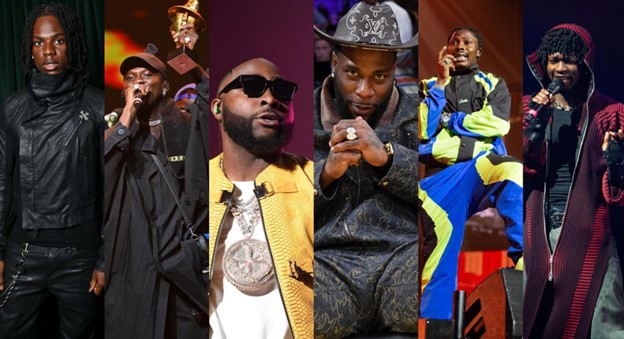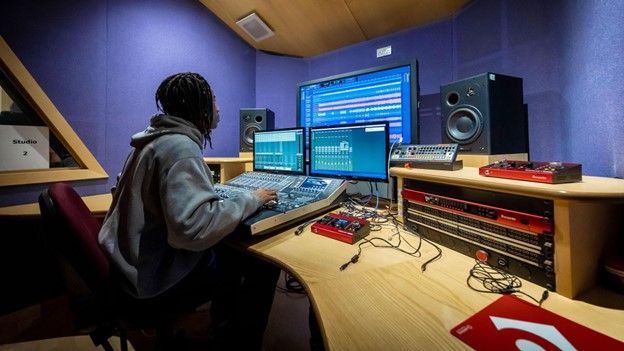The Role of African Creativity in the Growth of Afrobeats
The global rise of Afrobeat productions is a testament to the immense creative power that has emerged from Africa’s music scene. This genre, blending rich rhythms, local sounds, and global appeal, has captured audiences worldwide. But beyond the catchy beats and infectious energy, the story of Afrobeats’ growth is deeply rooted in the creativity of African artists, producers, and storytellers.

The Impact of Beat Producers and Digital Tools
One of the defining shifts in Afrobeats has been the democratization of music production. The emergence of digital beat-producing software, especially tools like FL Studio (Fruity Loops), has been a game-changer. These software platforms give aspiring producers access to the same high-quality equipment once reserved for top-tier studios in the West. African Video Directors have also not been left out as access to quality equipment have become more easily obtainable thus allowing them to produce quality visuals for Afrobeats that can compete anywhere in the world. For examples of good Video Directors in the world of Afrobeats on the African continent visit www.agcmediapulse.com
With just a laptop and an internet connection, producers across Africa can create chart-topping beats from their homes or local studios. This accessibility has helped to spark a wave of innovation, with producers experimenting with Afrobeat, highlife, and hip-hop elements, all while adding their own local flavor to the mix.
Leading the way are producers like Sarz, who has crafted hits for artists like Wizkid and Niniola, and Kiddominant, known for producing tracks for Davido and Chris Brown. These producers have not only shaped Afrobeats but also demonstrated how digital production tools can elevate African sounds to global recognition.

A Generation of Exposed and Culturally Fluent Youth
African youths today are among the most exposed and globally trendy. The blend of African colonial histories, Arab influences in the desert North, and Western media exposure have shaped a unique cultural melting pot on the continent. Many young Africans are able to create music and visuals that resonates with a wide range of global audiences.
For example, artists like Burna Boy and Tems effortlessly blend English with indigenous languages and Pidgin, creating songs that speak to both Western and African audiences. Burna Boy’s track “Last Last” features a mix of English and Pidgin, while Tems’ “Free Mind” embodies a fusion of Afro-soul and global pop. This ability to navigate languages and cultures makes Afrobeats universally appealing.
Similarly, Diamond Platnumz from East Africa has merged Swahili with English in hits like “Jeje”, while Fally Ipupa from Central Africa blends French and Lingala, showcasing the genre’s linguistic diversity. The multiculturalism of African youth enables them to create music that seamlessly crosses borders, resonating with listeners from different parts of the world.

Creativity and Resource Maximization
Afrobeats’ rise wasn’t built on a foundation of abundant resources or large budgets. Instead, it thrives on the ingenuity and resourcefulness of its creators. Many artists and producers have learned to make the most of the limited resources at their disposal, whether it’s using basic studio equipment or leveraging smartphone apps for recording.
This creativity, born out of necessity, has propelled the genre to international acclaim. In many cases, it’s the minimalism and rawness of their sound—produced with limited resources—that gives the music its distinctive edge. For instance, Asake, known for hits like “Sungba”, started his journey from street performances before crafting his signature blend of Afrobeats and Fuji in a modest studio setting.

Meanwhile, CKay’s global hit “Love Nwantiti” was recorded with minimal equipment, yet the track’s organic and heartfelt sound helped it become one of the most streamed African songs worldwide. These artists and producers have shown that the lack of resources is not a barrier to global success.
In conclusion, the rise of Afrobeats is a reflection of the immense creativity and adaptability of African artists, producers, and the youth culture they represent. With digital tools, a multicultural foundation, and a drive to innovate with whatever resources are at hand, Africa’s music scene has taken the world by storm. The role of African creativity in the growth of Afrobeats is more than just about sound—it’s about breaking down barriers, blending cultures, and demonstrating the power of making the most out of what you have.
